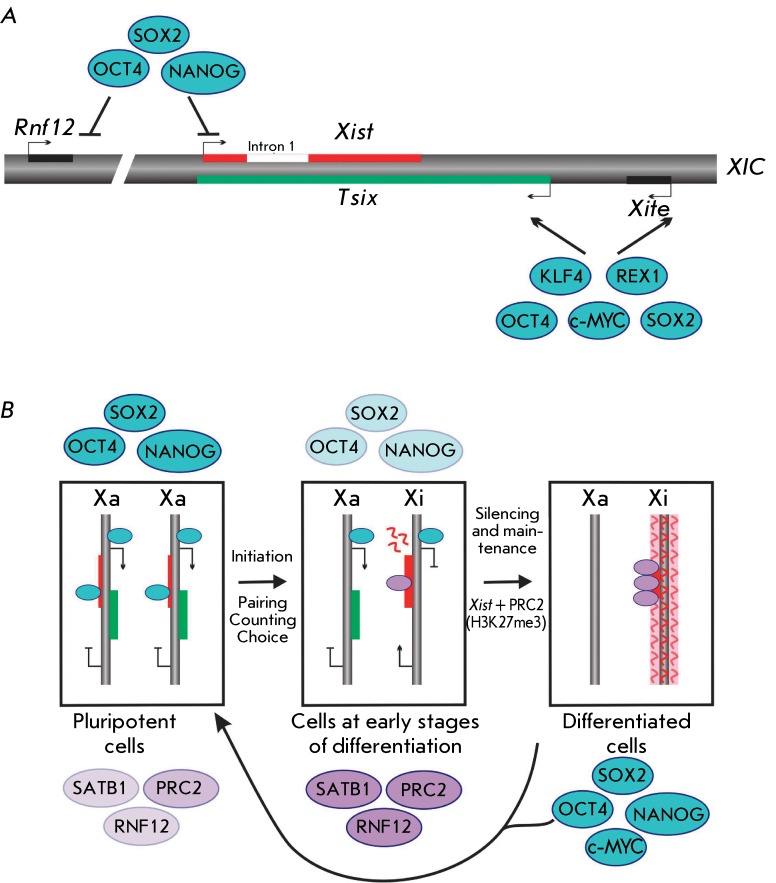Fig. 4.
Transcription factors of pluripotency in the regulation of X chromosome inactivation. (A) Scheme of the mouse X chromosome inactivation center (XIC). Xist , Tsix , and their activators – Rnf12 and Xite – are shown in red, green, and black, respectively. In undifferentiated female mouse ESCs, the transcription factors Oct4, Sox2, and Nanog bind to the first intron of Xist and Rnf12 , repressing their transcription. Meanwhile, OCt4, Sox2, Klf4, Rex1, and с-Myc bind to the regulatory regions of Tsix and Xite , activating their transcription. (B) In female mouse ESCs, Tsix is activated and Xist is repressed by the proteins involved in pluripotency maintenance. During the differentiation, one of the X chromosomes is inactivated. X-inactivation is a multistage process including the initiation of inactivation, establishment, and maintenance of transcriptional silencing. Initiation of inactivation occurs due to the decrease in pluripotency factor expression and involvement of chromatin structure regulators (such as SATB1 and PRC2) in the process. Overexpression of Oct4, Sox2, Nanog, and с-Myc in somatic cells induces reprogramming to the pluripotent state, which is accompanied by reactivation of the inactive X chromosome [166]

